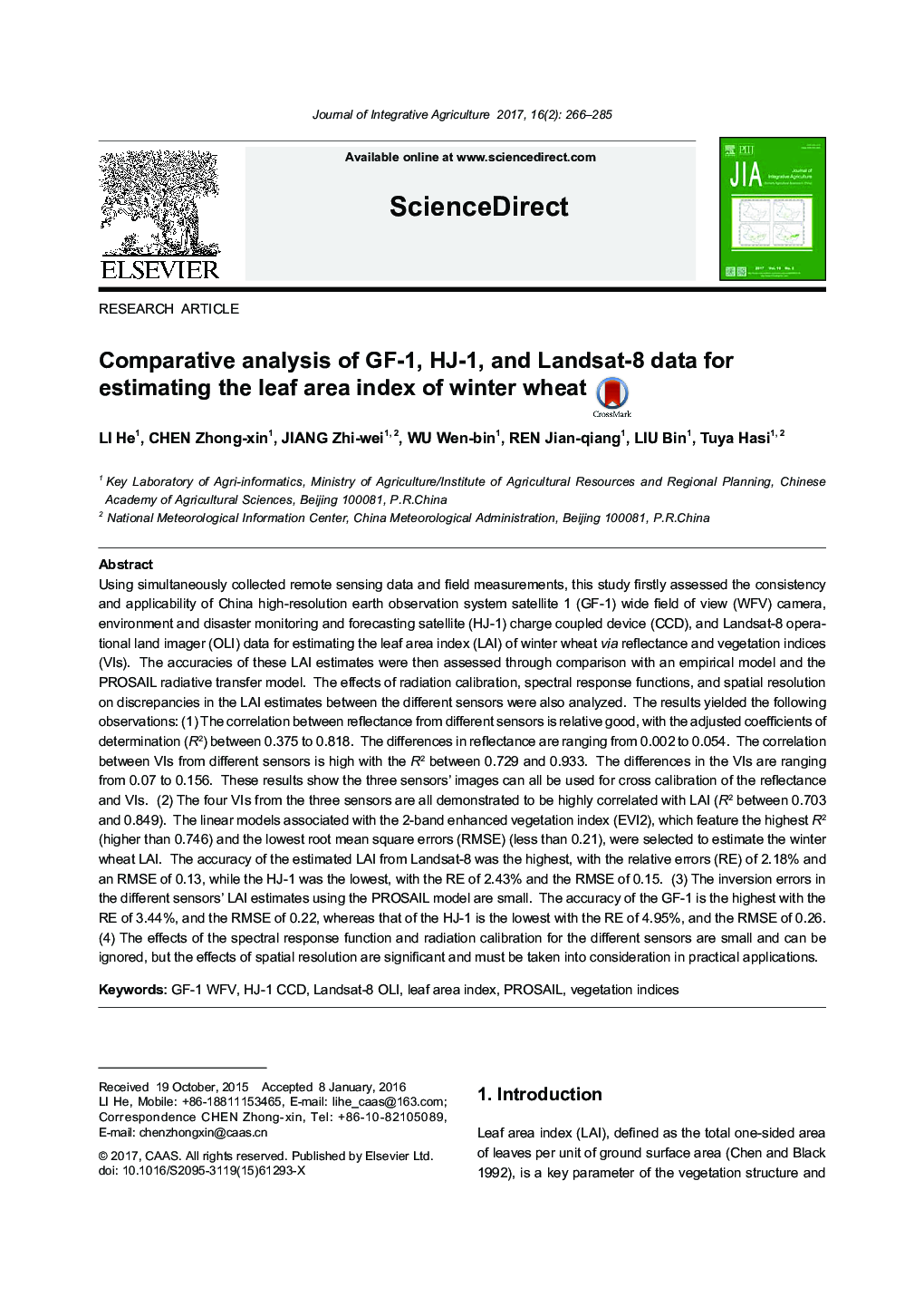| Article ID | Journal | Published Year | Pages | File Type |
|---|---|---|---|---|
| 8876088 | Journal of Integrative Agriculture | 2017 | 20 Pages |
Abstract
Using simultaneously collected remote sensing data and field measurements, this study firstly assessed the consistency and applicability of China high-resolution earth observation system satellite 1 (GF-1) wide field of view (WFV) camera, environment and disaster monitoring and forecasting satellite (HJ-1) charge coupled device (CCD), and Landsat-8 operational land imager (OLI) data for estimating the leaf area index (LAI) of winter wheat via reflectance and vegetation indices (VIs). The accuracies of these LAI estimates were then assessed through comparison with an empirical model and the PROSAIL radiative transfer model. The effects of radiation calibration, spectral response functions, and spatial resolution on discrepancies in the LAI estimates between the different sensors were also analyzed. The results yielded the following observations: (1) The correlation between reflectance from different sensors is relative good, with the adjusted coefficients of determination (R2) between 0.375 to 0.818. The differences in reflectance are ranging from 0.002 to 0.054. The correlation between VIs from different sensors is high with the R2 between 0.729 and 0.933. The differences in the VIs are ranging from 0.07 to 0.156. These results show the three sensors' images can all be used for cross calibration of the reflectance and VIs. (2) The four VIs from the three sensors are all demonstrated to be highly correlated with LAI (R2 between 0.703 and 0.849). The linear models associated with the 2-band enhanced vegetation index (EVI2), which feature the highest R2 (higher than 0.746) and the lowest root mean square errors (RMSE) (less than 0.21), were selected to estimate the winter wheat LAI. The accuracy of the estimated LAI from Landsat-8 was the highest, with the relative errors (RE) of 2.18% and an RMSE of 0.13, while the HJ-1 was the lowest, with the RE of 2.43% and the RMSE of 0.15. (3) The inversion errors in the different sensors' LAI estimates using the PROSAIL model are small. The accuracy of the GF-1 is the highest with the RE of 3.44%, and the RMSE of 0.22, whereas that of the HJ-1 is the lowest with the RE of 4.95%, and the RMSE of 0.26. (4) The effects of the spectral response function and radiation calibration for the different sensors are small and can be ignored, but the effects of spatial resolution are significant and must be taken into consideration in practical applications.
Related Topics
Life Sciences
Agricultural and Biological Sciences
Agricultural and Biological Sciences (General)
Authors
He LI, Zhong-xin CHEN, Zhi-wei JIANG, Wen-bin WU, Jian-qiang REN, Bin LIU, Hasi Tuya,
